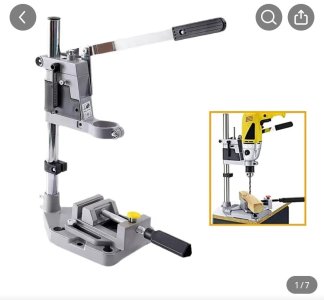FARCrow
Newbie
- Messages
- 11
Hey folks, I've received my first Warmoth neck (vintage modern, roasted maple, Rosewood fretboard, 10-16 compound radius, SS6150 wide & tall frets) to replace the neck on my Fender American Pro 2 Strat. I love the profile & finish of the stock neck, but can't get along with the narrow tall frets on it and I've had the guitar for over a year and a half. It's my favorite one to play, but all my other guitars are medium jumbo which I prefer so I got this Warmoth neck to address my fret size preference (we don't have any local Luthiers here in Kuwait so refretting isn't an option for me). I also took the opportunity to try my hand at dyeing my Warmoth neck to darken it to better match my Dark Night themed Strat (I never liked the bright yellow of the stock neck) with mixed results but that's a post for another day 
I took most people's advice and got HipShot locking tuners with the UMP plate to avoid drilling tuner screw holes, but due to the AM Pro 2 non-standard tapered heel I need to redrill one of the 4 holes for the offset one. I don't have a drill press and won't be doing enough drilling to warrant one. After researching different ways of drilling straight holes in the neck I found a possible solution that's seems to be a reasonable compromise between using a drill press or free hand drilling through the body (too risky with the possibility of damaging the body) and came across this drill guide which has a 1/8" guide hole for the neck screws:
Milescraft 1312 Drill Block - Handheld Drilling Guide
(can't post the link to Amazon probably cause I'm new?)
Anyone use this or something similar to drill straight neck holes accurately?e
Besides all the following:
I took most people's advice and got HipShot locking tuners with the UMP plate to avoid drilling tuner screw holes, but due to the AM Pro 2 non-standard tapered heel I need to redrill one of the 4 holes for the offset one. I don't have a drill press and won't be doing enough drilling to warrant one. After researching different ways of drilling straight holes in the neck I found a possible solution that's seems to be a reasonable compromise between using a drill press or free hand drilling through the body (too risky with the possibility of damaging the body) and came across this drill guide which has a 1/8" guide hole for the neck screws:
Milescraft 1312 Drill Block - Handheld Drilling Guide
(can't post the link to Amazon probably cause I'm new?)
Anyone use this or something similar to drill straight neck holes accurately?e
Besides all the following:
- Measuring the screws (smaller inside radius)
- Measure the drill bits & taping off
- Marking the hole using one of the screws through the existing neck hole
- Then drilling using this drill block/guide, and
- Using wax with the screws while tightening them very slowly
Is there anything else I should be aware of or consider for my first neck swap/upgrade? I'd really appreciate any advice or tips.
Last edited:



